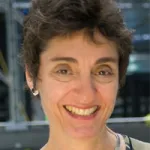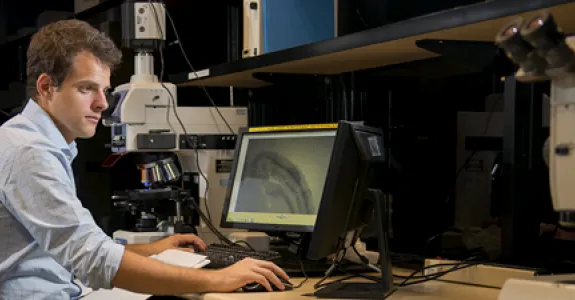
Home Department: Biology
Supported by: Dean of Research and VPUE
Mentor: Carla Shatz, Professor of Biology and of Neurobiology
Richard Sapp is a co-term student in the biology department. He is planning on pursuing a career in medicine with a specialty in developmental-behavioral pediatrics. He received the Firestone Medal of Excellence for Undergraduate Research for work conducted in Dr. Shatz’s lab. His thesis was titled “Acutely disrupting the function of PirB enhances ocular dominance plasticity.” This summer, he is continuing his research to determine whether pharmacologically blocking PirB can rescue plasticity in disease models. In his spare time, he enjoys playing violin and piano and playing basketball.
Poster presented at the Stanford Bio-X Interdisciplinary Initiatives Symposium on August 26, 2013:
Increasing Cortical Plasticity and Connectivity by Targeting PirB
Richard W. Sapp1, David N. Bochner2, George Sebastià Vidal Pérez-Treviño2, Maja Djurisic2, Carla J. Shatz1,2
[Departments of Biology1 and Neurobiology2, Stanford University]
Home Department: Biology
Supported by: Bio-X
Mentor: Carla Shatz, Professor of Biology and of Neurobiology
Richie Sapp is a junior majoring in biology with a concentration in neurobiology. He is planning to pursue a career in medicine with a specialty in either neurology or pediatrics. He was born in England and lives in San Diego. This summer he is working in Dr. Carla Shatz’s lab where he is examining the role of the immune receptor PirB in age dependent synapse plasticity. In his spare time, Richie enjoys practicing the violin and piano, hanging out with friends, and playing basketball.
Poster presented at the Stanford Bio-X Interdisciplinary Initiatives Symposium on August 17, 2011:
Disrupting the Function of Paired-Immunoglobulin-Like Receptor B PirB
Richard Sapp1, David Bochner2, George Vidal2, Carla Shatz1,2
[Departments of Biology1 and Neuroscience2, Stanford University]


